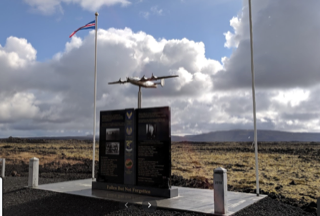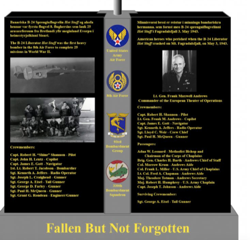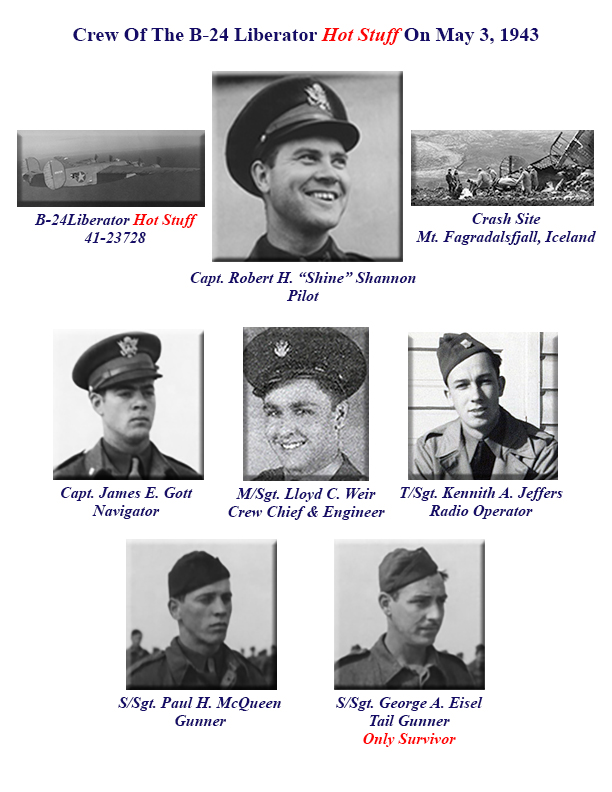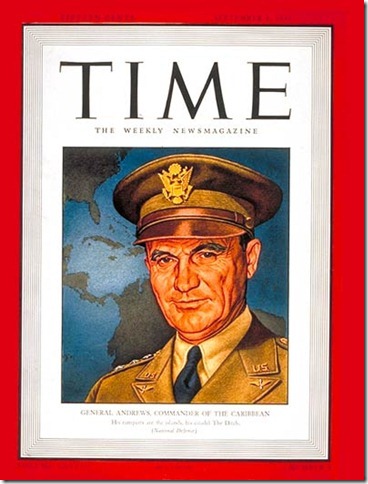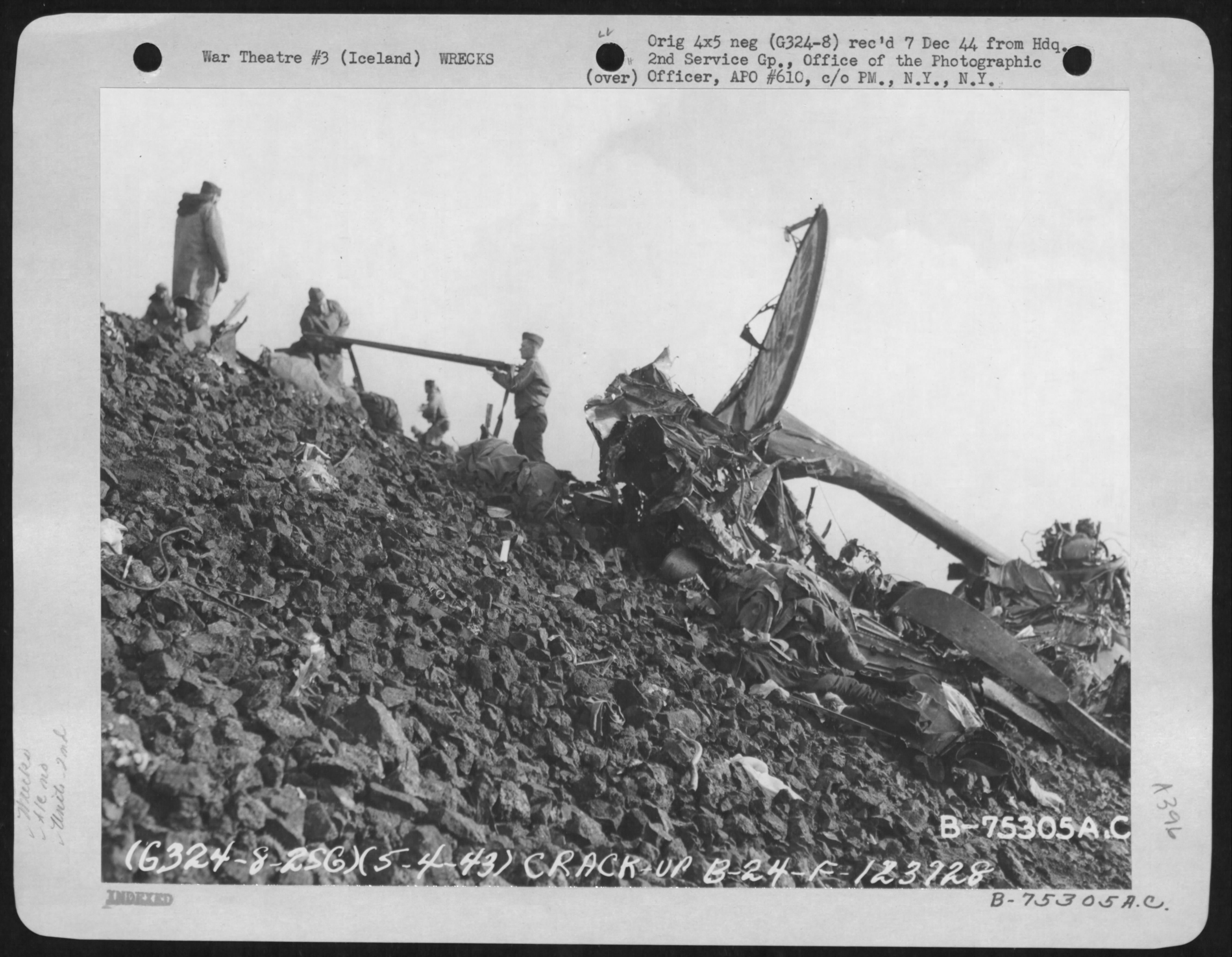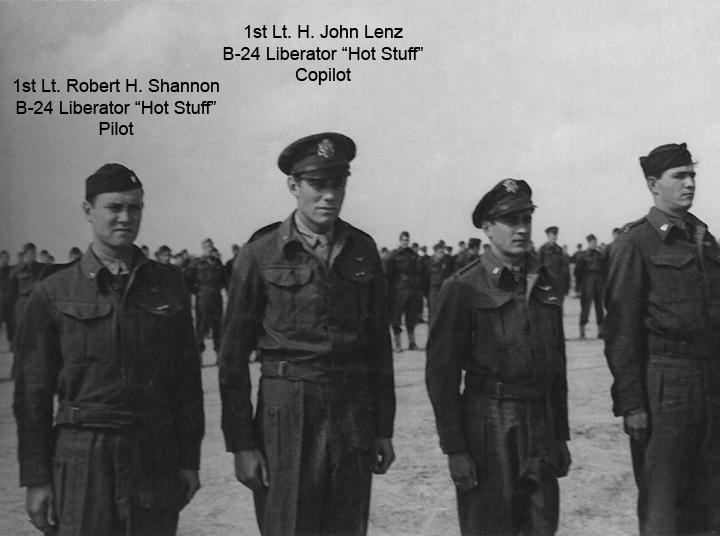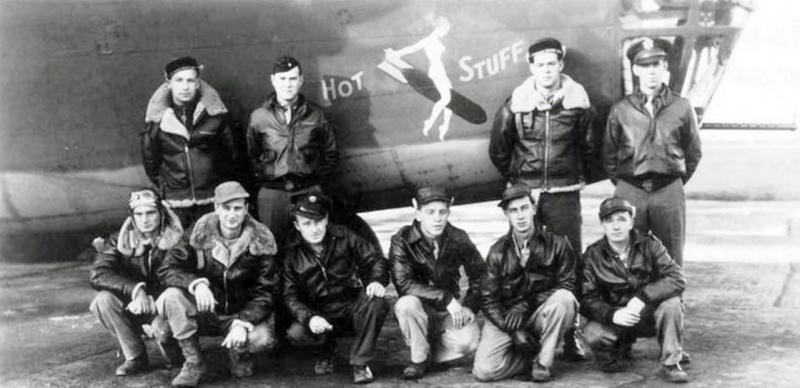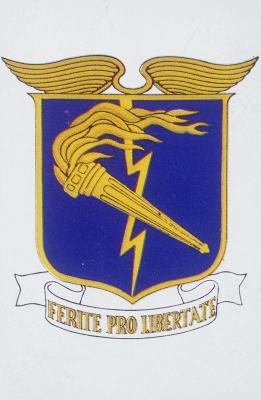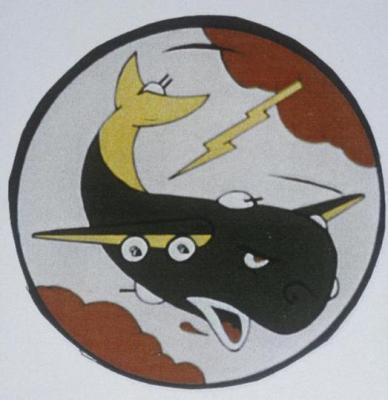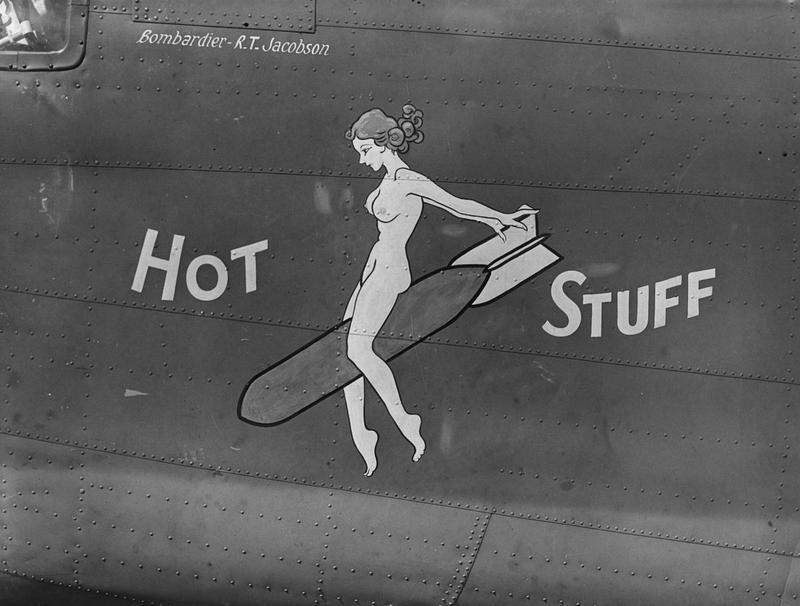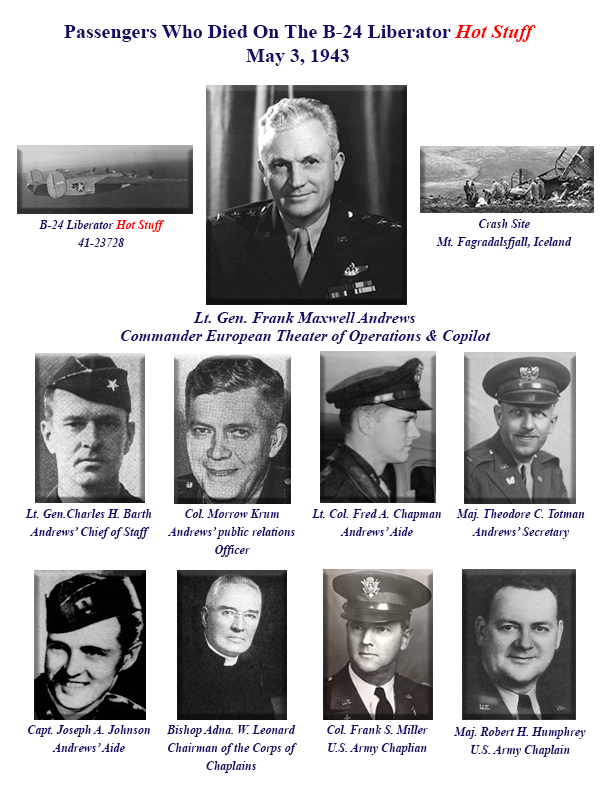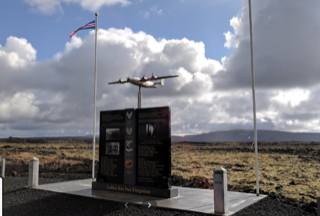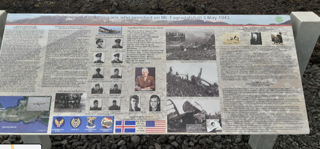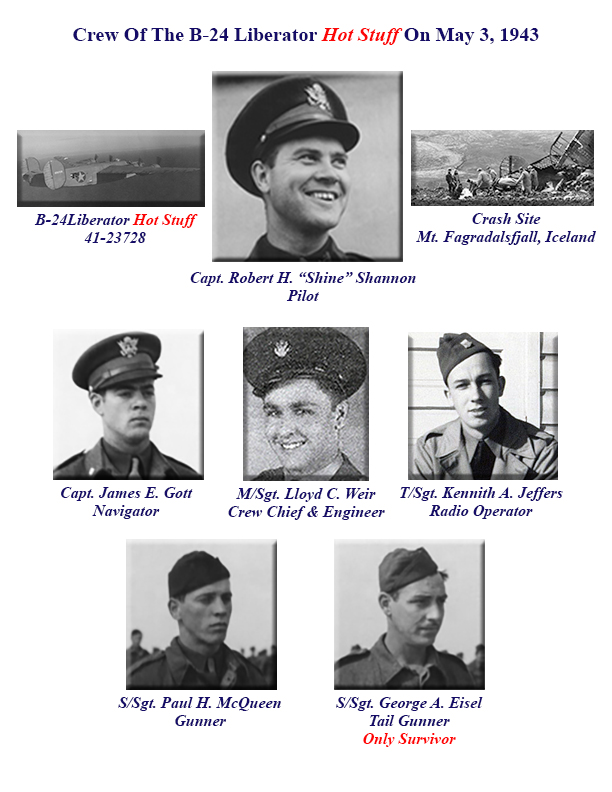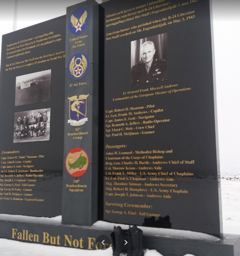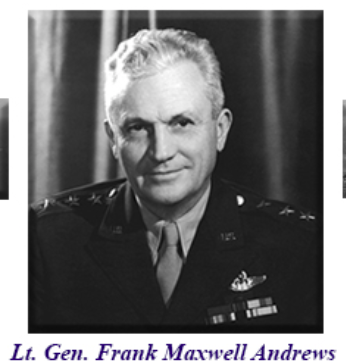Fallen but Not Forgotten & General Andrews Memorial - B-24 “Hot Stuff” (41-23728) Crash Site
Details:
Off the highway (National Route 43- Grindavíkurvegur) on the large plain in view of Mount Fagradalsfjall.
A black inscribed marble plaque about 8 feet tall with a stainless steel frame and model of a B-24 above the plaque. The memorial also includes and informational sign that is located adjacent to the standing monument.
B-24D Liberator (B-24D-1-CO, tail #41-23728) "Hot Stuff" was assigned to the 330th Bomb Squadron, 93rd Bombardment Group (Heavy), 8th Air Force, U.S. Army Air Forces flying combat missions out of RAF Bovingdon, England. “Hot Stuff” flew its 25th mission on February 7, 1943, against long odds at a time when many planes were being shot down. “Hot Stuff” became the first heavy bomber in the 8th Air Force to complete twenty-five missions in Europe in World War II and reached its 25th mission three-and-a-half months before the widely celebrated B-17 "Memphis Belle". After ‘Hot Stuff” completed thirty-one missions, the plane and her crew were on the return flight to the states for a War Bonds publicity and morale-boosting tour on May 3, 1943. Lieutenant General Frank M. Andrews, Commander of the European Theater of Operations needed to get back the states as he had been summoned to Washington DC by the General of the Army, George Marshall. Andrews and his entourage hitched a ride on “Hot Stuff”, and in doing so bumped five crew members from the flight. Though they were supposed to refuel at Prestwick, Scotland before heading out over the Atlantic, the crew elected to skip stopping at Prestwick and proceed to their next waypoint, Reykjavik, Iceland. They arrived to find the weather at their destination quite dicey with snow squalls, low clouds and rain. After several aborted attempts to land at the Royal Air Force station at Kaldadarnes, Iceland, the B-24 crashed into the side of 1,600-foot-tall Mount Fagradalsfjall, near Grindavik, Iceland. Upon impact, the aircraft disintegrated except for the tail gunner’s turret which remained relatively intact and 14 of the 15 aboard died except the tail-gunner Sgt Eisel who, though injured, survived the crash.
Joint Forces Base Andrews in Maryland, where Air Force 1 is stationed, is named in honor of LTG Andrews.
The monument was dedicated near the crash site on May 3, 2018, honoring Lt. Gen. Frank Maxwell Andrews, members his staff, three chaplains, and four crew members who died in the accident. The monument also honors the crew of “Hot Stuff “for their historic accomplishment of becoming the first crew to complete 25 bombing missions.
A bit about LTG Andrews:
Lt Gen. Frank Maxwell Andrews was the Commander of the European Theater of Operations (ETO) until his untimely death, having replaced Lt. Gen. Dwight David Eisenhower. According to Gen. Ira Eaker, Commander of the 8th Air Force at the time, he was to notify Andrews on the very day he died that “he had been selected to command the entire Allied Forces for the eventual invasion of Europe across the English Channel.” Andrews never received the message. The job would be assigned to Gen. Dwight David Eisenhower as Supreme Allied Commander seven months later. Camp Springs Army Air Field was renamed Andrews Field, now Joint Base Andrews in 1945 in his honor. Unfortunately, this great leader has been nearly forgotten.
Andrews, an advocate for a separate United States Air Force, is considered to be one of its founding fathers. He was selected above many who outranked him to organize and command the General Headquarters Air Force (GHQ Air Force), the first centralized command of what would eventual become the U.S. Army Air Force. Today’s United States Air Force is a testament to his organization and leadership skills. Gen. Andrews was the only general to command three Theaters of Operations during World War II, including the Caribbean Defense Command, U.S. Army in the Middle East Command and European Theater of Operations Command. The crew of the B-24 Liberator Hot Stuff had been ordered back to the United States to tour the country and help sell war bonds as reward for being the first to complete 25 missions. They had actually completed 31 missions but after the accident Hot Stuff was soon forgotten until now.
The website "A Story of Triumph & Tragedy" honors the crew and passengers. It is
http://stridsminjar.is/hotstuff/ and is reference for this monument.
Monument Text:
The text is written in English and Icelandic. The English reads:
The B-24 Liberator Hot Stuff was the first heavy bomber in the 8th Air Force to complete 25 missions in World War II.
Crewmembers:
Captain Robert H. “Shine” Shannon - Pilot,
Captain John H. Lentz - Copilot,
Captain James E. Gott – Navigator,
1st. Lt. Robert T. Jacobson – Bombardier,
Sgt. Kenneth A. Jeffers - Radio Operator,
Sgt. Joseph L. Craighead – Gunner,
Sgt. George A. Eisel – Tail Gunner,
Sgt. George D. Farley – Gunner,
Sgt. Paul H. McQueen – Gunner,
Sgt. Grant G. Rondeau – Engineer/Gunner,
American heroes who perished when the B-24 Liberator Hot Stuff crashed on Mt. Fagradalsfjalli, on May 3, 1943:
Lt. General Frank Maxwell Andrews,
Commander of the European Theater of Operations,
Captain Robert H. Shannon - Pilot,
Lt. General Frank M. Andrews - Copilot,
Captain James E. Gott - Navigator,
Sgt. Kenneth A. Jeffers - Radio Operator,
Sgt Lloyd C. Weir - Crew Chief,
Sgt. Paul H. McQueen – Gunner,
Passengers:
Adna W. Leonard - Methodist Bishop and Chairman of the Corps of Chaplains,
Brig. Gen. Charles H. Barth - Andrews Chief of Staff,
Col. Morrow Krum - Andrews Aide,
Col. Frank L Miller - U.S. Army Chief of Chaplains,
Lt. Col. Fred A. Chapman - Andrews Aide,
Maj. Theodore Totman - Andrews Secretary,
Maj. Robert H. Humphrey – U.S. Army Chaplain,
Capt. Joseph T. Johnson - Andrews Aide
Surviving Crewmember:
Sgt George A. Eisel – Tail Gunner
Commemorates:
People:
Robert Theodore “Jake” Jacobson
Robert Harwood “ Shine” Shannon
Units:
330th Bomber Squadron, 93rd Bomber Group
8th Air Force
Chaplains Corps
European Theater of Operations, United States Army
Wars:
WWII
Other images :

